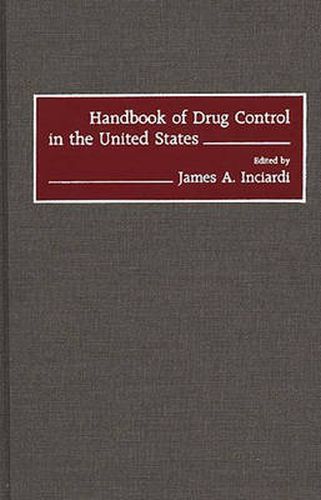Readings Newsletter
Become a Readings Member to make your shopping experience even easier.
Sign in or sign up for free!
You’re not far away from qualifying for FREE standard shipping within Australia
You’ve qualified for FREE standard shipping within Australia
The cart is loading…






This handbook surveys the US government’s efforts to control illegal drugs. The contributors offer a way of thinking about the problem, which, while not a solution in itself, provides the tools necessary to develop a realistic and effective national drug policy. Among these is a better understanding of the drug problem, which is supported by including the history and evolution of drug abuse and drug control in the United States, surveys of supply-reduction and demand-reduction strategies, and a discussion of the drug-control controversies. Part 1 consists of four articles that chronicle the history of the drug problem in the United States, the roots of the current policy effort and the emergence of drug abuse treatment as a means of demand reduction. This is followed by a focused examination of the links between drug use and crime. Part 2 then offers detailed accounts of contemporary efforts to reduce the supply and demand of illegal substances, including prevention, intervention, treatment and foreign policy considerations. Part 3 targets problematic sectors and controversies in contemporary drug control efforts such as foreign policy implications, drug testing, the AIDS/intravenous drug use connection, and the debate over the legalization of drugs. A series of background papers focus on drug paraphernalia laws and extradition, plus a summary of the 1989 National Drug Control Strategy released by the White House.
$9.00 standard shipping within Australia
FREE standard shipping within Australia for orders over $100.00
Express & International shipping calculated at checkout
This handbook surveys the US government’s efforts to control illegal drugs. The contributors offer a way of thinking about the problem, which, while not a solution in itself, provides the tools necessary to develop a realistic and effective national drug policy. Among these is a better understanding of the drug problem, which is supported by including the history and evolution of drug abuse and drug control in the United States, surveys of supply-reduction and demand-reduction strategies, and a discussion of the drug-control controversies. Part 1 consists of four articles that chronicle the history of the drug problem in the United States, the roots of the current policy effort and the emergence of drug abuse treatment as a means of demand reduction. This is followed by a focused examination of the links between drug use and crime. Part 2 then offers detailed accounts of contemporary efforts to reduce the supply and demand of illegal substances, including prevention, intervention, treatment and foreign policy considerations. Part 3 targets problematic sectors and controversies in contemporary drug control efforts such as foreign policy implications, drug testing, the AIDS/intravenous drug use connection, and the debate over the legalization of drugs. A series of background papers focus on drug paraphernalia laws and extradition, plus a summary of the 1989 National Drug Control Strategy released by the White House.